This post has been republished from https://streets.mn/2019/10/21/a-proposal-to-double-express-bus-frequency-without-increasing-costs/. Check out the comment section here for reactions to my proposal - both positive and negative!
The express bus system in the south metro has many inefficiencies in its design, leading to low service frequencies. By redesigning the system to consolidate duplicative routes, we can more than double bus frequencies without large increases in operating cost or travel time.
My experiences with express buses
This summer, I started riding the express bus system everyday from the Eagan Transit Station to downtown Minneapolis. Taking an express bus into work has many benefits for me: I have a faster overall commute thanks to the use of MnPASS lanes on 35W, I gain over an hour of free time every day during my commute, and I don’t have to worry about parking in downtown. It also means I don’t have the expenses of an additional car in my household, since I carpool to the bus stop. Commuting by express bus instead of by car also reduces wear on our roads, lowers riders’ emissions, and allows us to more efficiently use space both on our highways and downtown. These are some of the many reasons why transit agencies should be looking to promote express bus ridership for suburban commuters.
However, maintaining an express bus network presents many difficulties for transit agencies. The low density and lack of a grid network in most suburbs means reaching new customers becomes more difficult, and maintaining a frequent bus route is downright impossible for nearly all suburban areas. Express buses also need to compete with cars on both comfort and cost. In a time with low gas prices and high bus headways, it’s hard in many cases for buses to compete. As a result, express ridership in the metro area is down 8% in the last year, compared to a 2% drop for overall transit use.
As an avid transit enthusiast, I wanted to look more deeply into this trend and see if there was anything that could be done to reverse the ridership slide. Specifically, I examined the frequencies of buses and what could be done to improve them for the average rider. What I found is a relatively inexpensive way to drastically improve the express bus transit experience. By designing a more efficient suburban express bus system, we can effectively double average trip frequencies without a large increase in operating costs.
Why is frequency important?
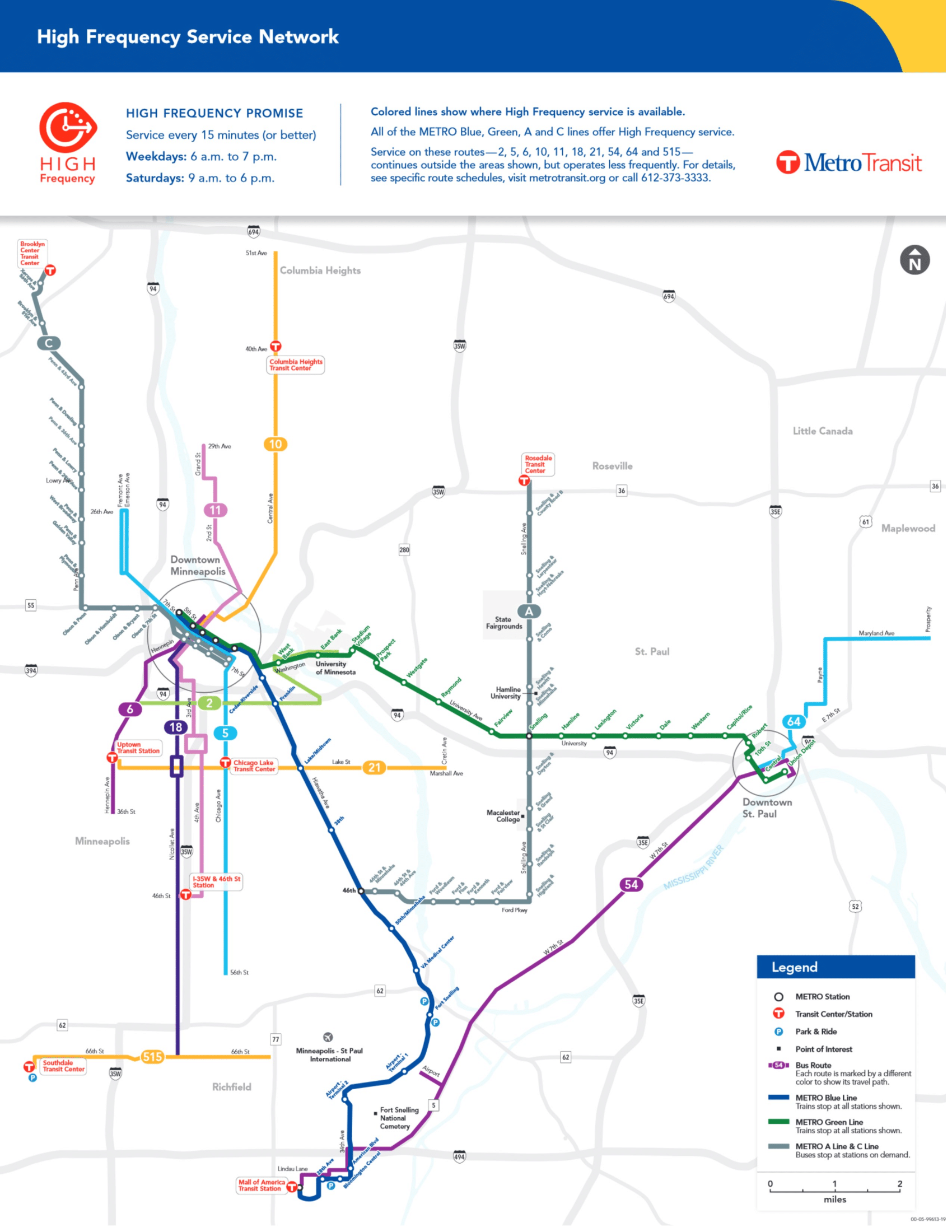
Metro Transit’s High Frequency Network
Frequency is one of the most important metrics, if not the most important metric, when evaluating a transit service. Studies show that increasing frequencies directly improves ridership, and many examples across the country back this assertion up. After all, one of the reasons why the light rail is so popular is its incredible ease of use. Nobody keeps track of the light rail timetables – you can just go to a station and expect that a train will be arriving soon. As famed transit planner Jarrett Walker likes to say, “Frequency is Freedom.” Because of the high level of service provided, light rail ridership is growing dramatically, in contrast with the shrinking Twin Cities transit system as a whole.
Unlike the light rail, most express bus routes are not this easy. If you want to ride an express bus, knowing which station to get on isn’t enough – you have to learn the schedule, and figure out which bus you need to get on, and which bus can take you home. For many would-be express bus riders, the infrequency of services causes them to choose driving over transit. But what if it weren’t this way? What if riding the express bus were as easy as riding the light rail?
After analyzing the network of express buses operated by MVTA in the suburbs of Apple Valley, Burnsville, Eagan, Lakeville, Prior Lake, Rosemount, Savage, and Shakopee, I found a relatively simple way to more than double average bus frequencies. All we need to do is consolidate our existing express bus network into a set of core, high-frequency routes. And the best part? Given the inefficiencies in our current network, this high-frequency consolidation could be implemented without a large increase in operating costs!
An example of route consolidation
For example, Route 470 leaves from the Eagan Transit Station at the intersection of 35E and Pilot Knob. The 470 leaves Eagan Transit Station 4 times during the peak hour of 7am-8am. Another bus, the 472 leaves from the Blackhawk Park and Ride, a few miles south of the Eagan Transit Station. Route 472 also has 4 departures during the peak hour.
Currently, these two routes are completely separate: both buses head straight downtown without any stops. However, I believe that we can strengthen the quality of bus service by combining these bus routes into one route, starting at the Eagan Transit Station and stopping at Blackhawk Park and Ride before heading to downtown. Since there would now be 8 departures each hour, the frequency of the route is effectively doubled without needing new buses or drivers.
What’s more, I found possibilities for this type of route consolidation in every other suburb I looked at in the south metro. In the following section, I will describe my proposal for a new express bus system and analyze the potential effects of the system on riders.
Methodology
As the concept of frequency is very important in my proposal, I need a standardized way to calculate it. I chose to determine current bus frequency at a given station by counting the number of buses leaving the station during the peak hour of 7:00am to 8:00am, the time when most people leave for work. Peak service will of course be extended before and after this timeframe, but using 7-8am as a base gives me an easy way to calculate hourly frequency for all stations in a standardized way.
In addition to frequency, I need a standardized way to calculate the changes in trip time caused by the route detours. To find the northbound detour change, I find the time it takes to reach 2nd/Washington in downtown with and without the detour, with existing routes leaving at approximately 7:30am. For southbound trips, I find the time it takes to reach each station from the Gateway Ramp with and without the detour, with existing routes leaving at approximately 5:00pm.
As an example, I’ll use the northbound buses from Rosemount Transit Station to downtown detouring at Palomino. Normally at 7:30am, a direct bus from Rosemount to downtown takes 50 minutes, while a direct bus from Palomino takes 37 minutes. According to Google Maps, driving time from Rosemount to Palomino is 14 minutes. Thus, the total time with the detour is 14+31=51 minutes, 1 minute longer than the direct trip from Rosemount. I also add an extra minute for boarding at all stops other than Burnsville Transit Station, which I allocated 2 minutes for boarding due to the station design. With this extra minute, we calculate a total detour time of 2 minutes.
Current system
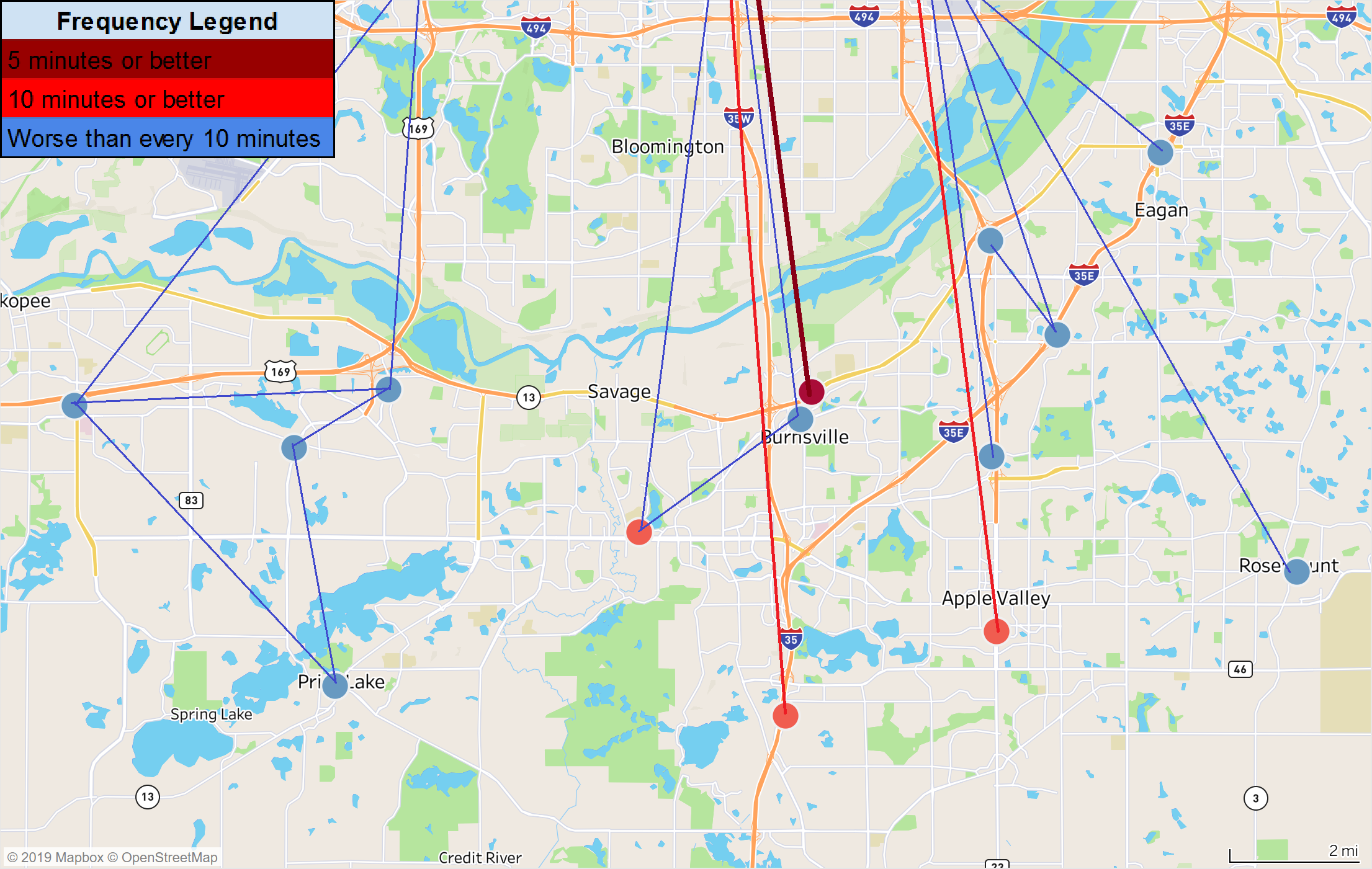
Our current express bus system in the south metro. Look at all of the redundant, overlapping lines with low frequency!
Currently, there are 11 express bus routes from the southern suburbs to downtown Minneapolis – 10 routes operated by MVTA and route 467 operated by Metro Transit. Many of these routes also have multiple branches, making the effective number of routes even higher. My proposal is to consolidate the current system into 6 core express routes. This will make the system much more understandable and increase route frequencies without increasing the operating costs of the system.
Proposed system
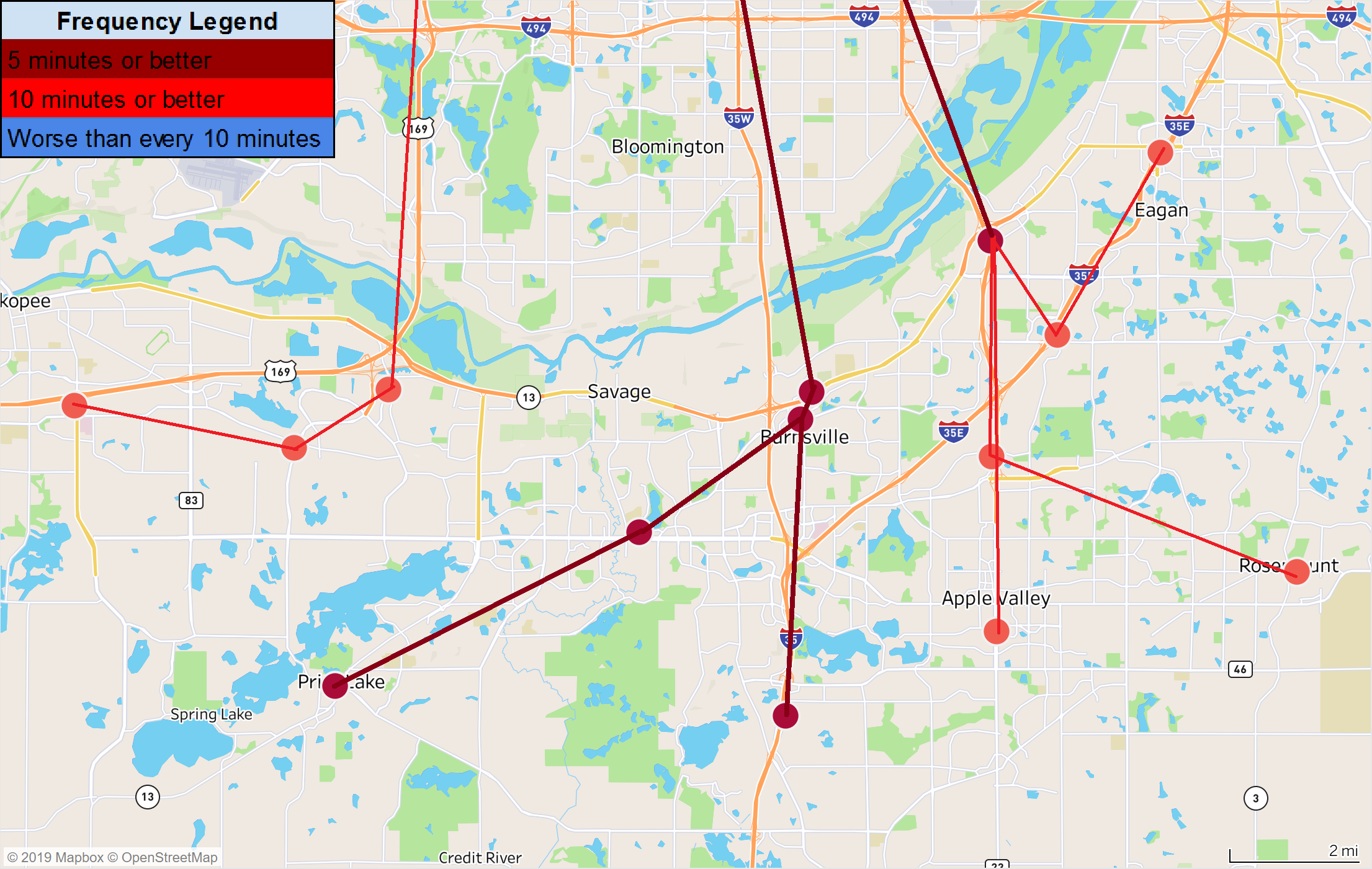
My proposed express bus system. Notice how much more clean and understandable this new system is!
Eagan
As I described above, I propose to consolidate Routes 470 and 472 into one express route. The new route will start at Eagan, stop at Blackhawk, and then continue into downtown.
Rosemount
Route 478 from Rosemount Transit Station has 3 departures during the peak hour. Route 476 from Palomino Hills Park and Ride has 4 departures during the peak hour. I propose to consolidate these into one express route, which will start at Rosemount, stop at Palomino, and then continue into downtown.
Apple Valley
Route 477 from Apple Valley Transit Station has 9 departures during the peak hour. I am not proposing any changes for this route.
Lakeville
Route 467 has 7 departures during the peak hour from Lakeville Kenrick Park and Ride. I propose increasing this to 15 departures, with all trips now stopping at Heart of the City and Burnsville Transit Center as well.
Prior Lake
Route 464 has 6 departures during the peak hour from Savage Park and Ride. All departures stop at Heart of the City Park and Ride. I propose doubling this to 12 departures, with the addition of a stop at Burnsville Transit Center.
Prior Lake is currently served by Route 490, with 1 departure during the peak hour. I propose extending express bus service from Savage to Prior Lake, and eliminating service on the 490.
This is a huge increase in service to Prior Lake, one which I believe will create significant new ridership. Route 490 currently terminates in a relatively commercial area, so new transit-oriented development could form. I would also not be opposed to the construction of a Park and Ride in Prior Lake.
Shakopee
Route 493 has 3 departures from Marschall Park and Ride during peak hours. Route 490 has 5 departures from Southbridge during peak hours, which also branches to either Marschall or Eagle Creek Park and Ride. I propose consolidating these into a single route which starts at Marschall, and stops at Eagle Creek, and Southbridge before continuing into downtown.
Burnsville Transit Station + Cedar Grove Transit Station
With the implementation of the proposed express system, 2 convergence stations will form: Burnsville Transit Station and Cedar Grove Transit Station.
Burnsville Transit Station currently has 14 departures during the peak hour. With my proposal, buses from Prior Lake and Lakeville will converge at Burnsville with a trip frequency of 27 departures during the peak hour. With extra funding, I would want to create a dedicated southbound transit ramp from 35w, to match the northbound transit ramp and speed up travel time, but this is not strictly necessary for the proposal.
Cedar Grove Transit Station currently has 1 departure during the peak hour that serves Downtown Minneapolis. It’s not even a very great “express” route – after leaving Cedar Grove, it meanders around local streets for 20 minutes before crossing (but not stopping at) Cedar Grove again to get to downtown!
I want to use the recently built $14 million dollar online station to actually serve express riders at Cedar Grove. Specifically, I propose that all express buses from Blackhawk, Palomino, and Apple Valley stop here. With my proposal, frequency will increase to 24 departures during the peak hour. Stopping at an online station should not create much of a delay, so I’m not sure why buses don’t do this already.
Analysis
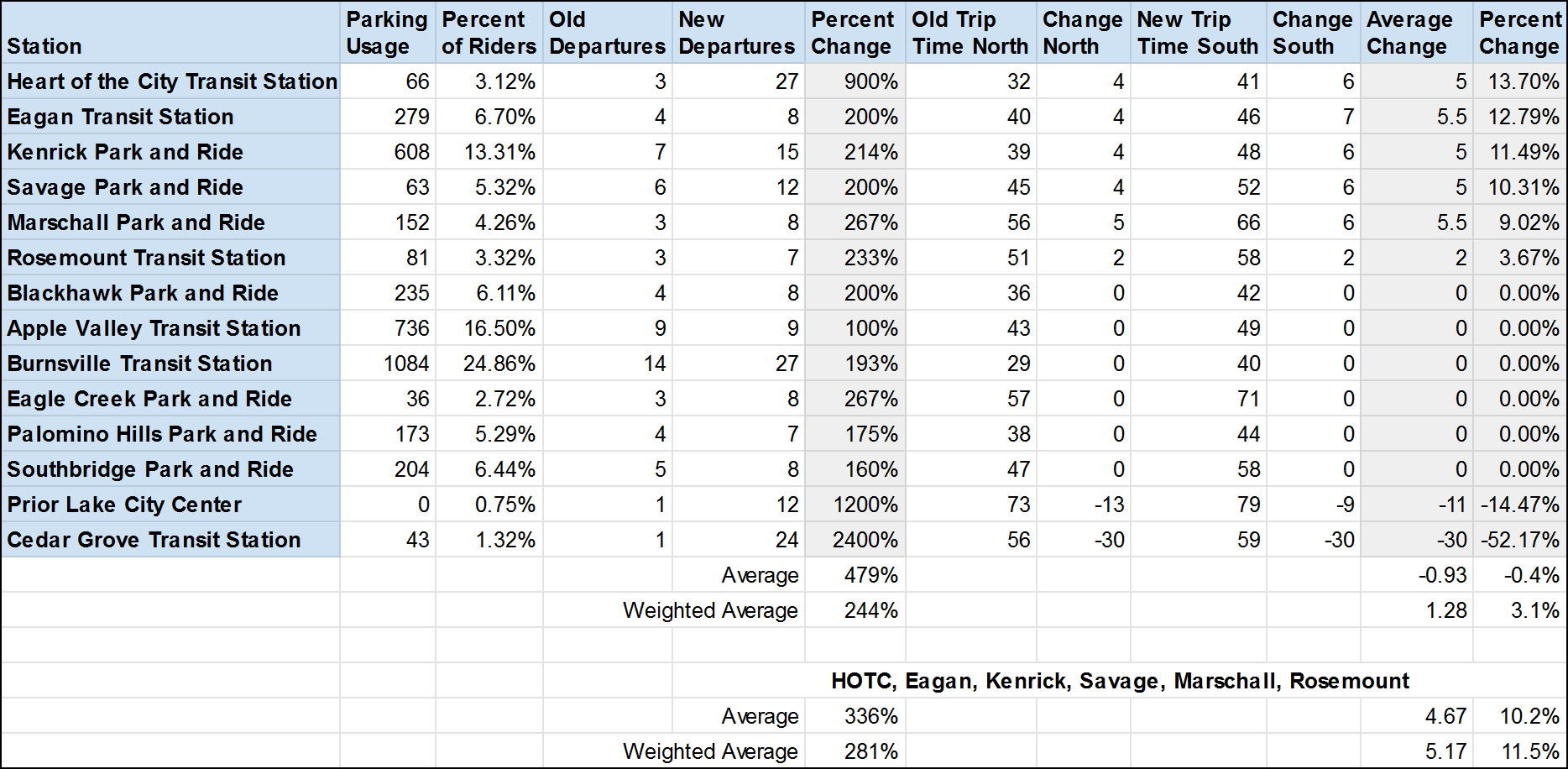
Analysis of Frequency and Travel Time
The two major changes the proposed system will have on riders are frequency and travel speed. Taking a simple average of the change in frequency and travel times over all stations gives us an increase in frequency of 479% and a decrease in travel time of 0.9 minutes! These seem like amazing results, but are in fact very misleading, since most of the positive effect is coming from the two stations of Prior Lake and Cedar Grove, both of which have very low ridership currently.
To better understand the actual impact the redesign will have on transit users, I could take an average of the station data weighted by transit ridership at the station. However, I don’t have access to MVTA ridership data, so I estimated ridership by considering number of existing departures by station and number of cars parked at each station. For example, I estimate that Burnsville has about 25% of total riders in my system, because it has 29% of all parking usage and 21% of all departures in the current system. This estimate isn’t perfect of course, but it gives us a decent starting point for analysis.
Using this ridership estimate, I find that in the redesigned system, the average transit rider’s frequency is increased 244%, while their trip time increases by only 1.3 minutes (3% of total travel time). What’s more, every single rider in the system will have access to frequencies of at least 7 departures per hour or greater. This is actually a higher frequency than the light rail provides!
From these numbers, it is clear that the average rider is gaining enormously, since the choice between more than doubling frequency and a 3% increase in trip time is obvious. However, not all riders are gaining from the redesign equally. Specifically, the stations that will incur a positive increase in travel time are Heart of the City Park and Ride, Eagan Transit Station, Kenrick Park and Ride, Savage Park and Ride, and Rosemount Transit Station. Riders from these 6 stations make up approximately 36% of all riders in the system. If my proposal is implemented, these riders can expect their trip frequency to increase 336%, but their trip time will increase 5.2 minutes (11% of total travel time).
For these riders, there is a decision to be made between frequency and speed. From my personal experience as a daily rider at one of these stations, I strongly believe that the massive increase in frequency compensates for the slight increase in travel time, and I feel that most other riders will as well.
Challenges
Other than increased trip times, there are a few topics which might cause issues when implementing the proposed express bus system:
Cost: One of the big claims about this proposal is that it can double frequencies without requiring a corresponding 2x increase in operating costs. The reason why this is possible is because the new system isn’t actually adding any extra trips, so the number of buses and drivers will remain the same.
Of course, there is a small increase in cost because of extended service to new stops, but without more financial data from the MVTA, I can’t calculate exactly what it would be. The two biggest operational cost increases will be extending the old 460 to Lakeville, and extending the old 476 to Rosemount, which could add an extra ~30% to costs. However, these two routes make up much less than half of all routes total. It’s also important to note that every express bus full of passengers also has an empty express bus going the other way, and this empty bus is not affected by new stops. Keeping this in mind, a very, very, back-of-the-envelope estimate for a cost increase is 10-15% to the total system.
Too much service?: Once concern transit officials might have with the system is the extension of trips to far-out suburbs where people might not use them. For example, Prior Lake is increasing from 1 departure to 12 during the peak hour! Service vs Ridership is a very chicken-and-egg problem, and I would argue that people don’t use express buses because the service is underwhelming, and not the other way around. With the current system, adapting to the rigid bus schedule can seem very unappealing compared to the flexibility of a car. On the other hand, I don’t know anybody who enjoys driving in traffic or parking in downtown. I could see a future with booming express bus use, as long as riders are given an easy-to-use system that is more convenient than driving.
One way to measure ridership potential would be an expensive, drawn-out study period like those that many new transit proposals face today. However, since the new system doesn’t have any upfront costs needed for implementation, we could instead simply pilot the proposal for a year, giving us much more useful data and avoid unnecessary overhead expenses.
Gradual Rollout vs System Overhaul: One nice thing about this proposal is that many of the planned route changes are independent of other route changes. For example, the 470 and the 472 can be consolidated without touching any of the other express routes in Apple Valley, Burnsville, or Shakopee. However, I would recommend that the system be implemented overnight instead of a gradual rollout. Not only will this prevent local routes being in a constant state of disorder over the rollout period, but an instant redesign makes for better publicity and allows potential future riders to see the new network with a fresh eye.
Defining Peak Hours: While this post used the period between 7am and 8am for determining route frequency, this is of course not the maximum range of service. In the current system, express buses generally run from 5:30am-8:30am in the mornings, and 3pm-6pm in the evenings. Because my proposal only consolidates bus departures without adding any new service, this window of buses will not shift much with the consolidation. However, times maybe expanded slightly in some cases. For example the latest bus from Blackhawk leaves at 8:15am, while the latest bus from Eagan leaves at 8:18am. When these two routes are consolidated into one route, the latest departures can shift further back, to around 8:30am.
Providing Off-Peak Service: The lack of off-peak service can be a huge deterrent for riding express buses. Even if running buses outside of rush hour can be expensive, having the flexibility to ride throughout the day can boost confidence in the peak hour busses. As an everyday express bus rider, I often feel this squeeze whenever I need to stay past the last available bus for Eagan Transit Station. Luckily for me, I can usually take one of the later buses to the Burnsville Transit Station and get a ride home, even though it’s quite out of the way from my house. Other people, especially if they park at a park-and-ride, don’t necessarily have this luxury and may simply choose to drive all the way to downtown instead.
While I understand the importance of off-peak service, it is somewhat out of the scope of this proposal – my goal for this analysis was to improve current bus service without adding new buses. However, I do have some ideas for implementing cost-effective off-peak transit to the southern suburbs. Look for that proposal in my next post!
Conclusion

Summary of Proposed Express Bus System
Overall, I believe that I’ve designed an express bus system that works much better for transit riders than our current system. By consolidating similar routes and eliminating inefficiencies, my proposed system is able to increase the average bus frequency nearly 250% while only increasing travel times 3%. Most importantly, this increase doesn’t come with a heavy price tag, since the new system has the same number of buses, drivers, and individual trips as the old system.
This analysis focused specifically on the MVTA-served suburbs of Apple Valley, Burnsville, Eagan, Lakeville, Prior Lake, Rosemount, Savage, and Shakopee. However, preliminary analysis of other express bus routes leads me to believe that this kind of system consolidation is possible throughout the entire region. With a high quality express bus network reaching all corners of the metro area, we can begin to reduce parking requirements in downtown Minneapolis, unclog our congested highways, and promote a cleaner, greener lifestyle for all residents in the Twin Cities.
Let me know what you think of my express bus proposal in the comments! I’m especially interested in hearing feedback from people who regularly ride express buses like me. Would you prefer the current system or my proposal?


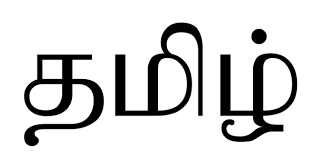
0 Comments